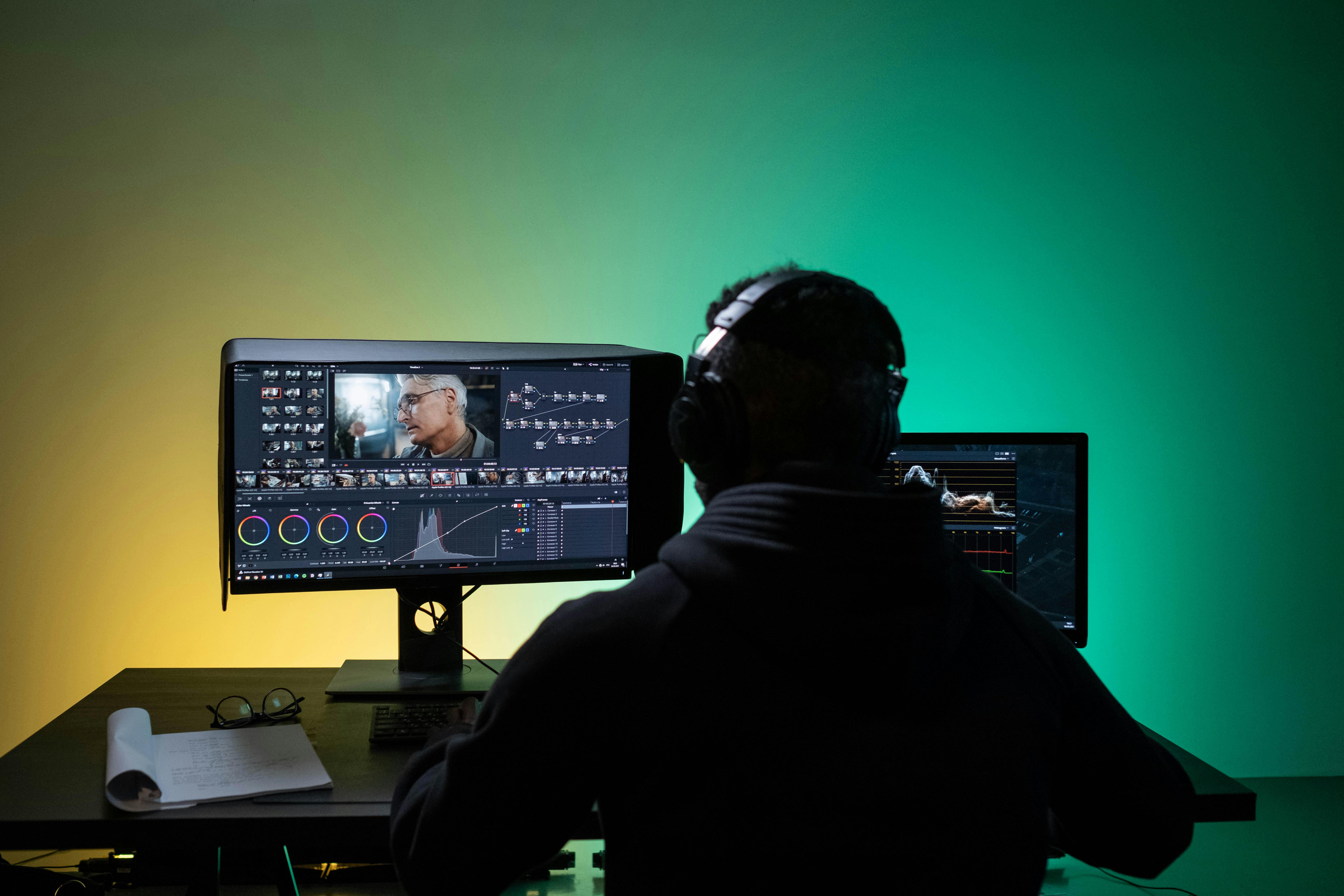- Squarecubic Home
- Faceless Videos and Copyright Fair Use
Faceless Videos Fair Use & YouTube Copyright Strikes
The world of faceless videos and fair use YouTube copyright rules can be a treacherous jungle, especially since off-screen host channels rely heavily on commentary and creative editing.
But fear no more, content creators! In this comprehensive guide, we will equip you with the knowledge to navigate Fair Use, to dodge Content ID claims, and to keep your channel thriving, free of YouTube demonetization anxiety.

Disclosure: We recommend products we believe to be suited for our own use and for our readers. We may earn a small commission at no additional cost to you through purchases made via affiliate links on this page.
Demystifying Fair Use
First, for those for whom this is unclear, what exactly is Fair Use? Fair use is a legal doctrine that allows limited use of copyrighted material without permission from the copyright holder.
The problem is this is a complex concept with wide gray areas. Here are some key points to remember:
Transformation is Key
Your video should be transformative, as in adding significant value to the original work. This could be through commentary, education, parody, or creative editing.
For example, simply reacting to copyrighted content with minimal additions likely won't qualify as fair use. Why not?
Let’s quickly review the specific wording of the Copyright Act:
"The fair use of a copyrighted work, including such use by reproduction in copies or phonorecords or by any other means specified by that section, for purposes such as criticism, comment, news reporting, teaching, scholarship, or research, is not an infringement of copyright." [U.S. Copyright Office, https://copyright.gov/]
With this out in the open, the law has four pillars that courts consider when evaluating fair use.
The source for these pillars is actually Title 17 of the U.S. Code, Section 107, which defines fair use.
Remember, YouTube is not the final arbiter of copyrights rules as some faceless videos content creators might believe.
You can get a pass from YouTube or not be detected, and the copyright holder is still rightfully free to decide to take you to court.
The Four Pillars Are:
- Purpose
and Character of Use
Is your video transformative? Is it educational? Does it include some aspect of critical reworking? And is it for commercial gain or not? -
Nature
of the Copyrighted Work
If you use factual content like news clips, you have a stronger fair use case than using creative works like movies, other people’s copyrighted music, etc. -
Amount
and Substantiality of The Portion Used
How much you use and particularly the main focus in using the essential portions of the copyrighted material matter. A short and not total use of a clip for commentary is more likely to be fair use than a substantial portion of the original work.
Also, if the portion you use is the core of the original creator’s focus, fair use may be harder to defend.
For instance, if the original work shows how high an Olympic high jumper leaps, and you use the exact same clip to project the exact same idea, fair use will likely not work. -
Impact
on the Potential Market for or Value of the Copyrighted Work
It’s best to stay clear of content if it directly competes with the original work. If your video harms the marketability of the original work, courts will be fair and not rule against the party that is being taken advantage of.
So for instance, compilations that basically take the place of the original content and offer nothing more to differentiate the content may run into problems.
How to Avoid Copyright Strikes: Strategies for Faceless Videos Channels
Here are some practical tips to minimize copyright issues on your faceless videos. Similar to tax law, on the one hand you have tax avoidance, which is legal, and on the other, tax evasion, which is illegal.
Understanding what side of the fence you’re operating from can save you a lot of headaches.
It is always best to avoid copyright strikes within the prescribed rules of law. This guide is not intended to teach you unlawful or unethical practices. With this cleared up, here we go.
Source Your Content Wisely
- High-Risk Sources
Avoid content from corporations with strong legal teams, like sports broadcasts, movies, and ads.
The reason is, even if you do everything by the book, a powerful corporation with its army of lawyers may still dislike their content being used, and they have the means to make that very distasteful for you as well.
Even if they don’t end up winning the case, how much would you like to find yourself in their crosshairs?
- Low-Risk Sources
Public domain footage, stock footage, news clips, and user-generated content pose a much lower risk.
Again, remember that there is no full-proof way to stop a copyright holder from raising a copyright claim if they decide to.
The ultimate arbiter is the judge. However, some copyright holders are much less likely to make a stink and quite frankly, some may simply lack the means to do so even if they wanted to.
- Diversification is Key
Don't rely on just one source when gathering clips. Having a variety of low-risk materials will strengthen your fair use argument.
Most likely, it will even give your work a more justifiable connotation than if you only had one source to base your use on.
- Content ID and Clip Length
The "10 Seconds" Misconception:
There is a lot of unfounded noise out there about clip duration threshold of a maximum of 10 seconds to avoid YouTube strikes.
In all actuality, there's no magic number. Regardless of length, using the heart of a copyrighted clip can trigger a copyright claim. It all comes down to how you used the clip.
- The Interval Technique
One way to approach this issue is to separate and intersperse short copyrighted clips with your commentary or other content.
This will potentially avoid Content ID detection and is more likely to possibly get you passed YouTube monitors.
However, remember that there isn't a foolproof method. After all, you’re attempting to use someone else's work without their consent. So, let’s talk about it.
Building a Strong Fair Use Case
Focus on Transformation
Again, offering a transformative rendition of the content is essential. Ensure your video adds significant value through your commentary, your editing, or your educational utility.
Context is King
Present copyrighted material in a beneficial contextual manner that gives you a stronger argument or justification for fair use.
A fatal flaw would be simply copying content that belongs to someone else without any attempt whatsoever to present it with a different angle.
Limit Market Impact
When truly adding value, it is more likely that you will, at the very least, lean away from content that directly competes with the original work.
As you reduce potential audience for the copyright holder, you expose yourself more to possible claims or strikes against you.
Remember that Fair Use is a complex legal concept. Even the most seasoned faceless channel YouTubers will without a doubt be confronted with YouTube strikes, copyrights claims, and potential lawsuits when videos do very well.
A lawsuit typically means that you’re benefiting financially from the use of the copyrighted content, and the copyright holder wants in on the action.
Some would consider it “cost of doing business” and simply factor it in their financial playbook. If the pie happens to be big, consulting a lawyer for specific advice is highly recommended, especially if facing a copyright claim from an aggressive high-risk source.
In Closing
While it may be time-consuming and labor-intensive, obtaining copyright permissions is always a good option for your peace of mind. Depending on your project, consider contacting the copyright holder directly for permission to use their material.
Investing in royalty-free stock footage from select platforms to enhance your supply of videos in all legality is another viable option.
This guide also gave you foundational knowledge to navigate the murky waters of Fair Use modalities, specifically tailored for faceless videos. Just keep in mind that copyright law is a constantly evolving field.
Staying informed, understanding fair use principles, implementing practical strategies, and including additional considerations like managing risk as part of the job, you can confidently carry on creating valuable content.
Start Making Money
with Affiliate Marketing!
Quality Affiliate Programs
Recent Articles
-
The Weeknd Net Worth aiming for a Billion
Learn about The Weeknd Net Worth journey, and how Abel Tesfaye quietly built a billion-dollar brand. -
Personal Finance Tips: Your Financial North Star
Personal finance tips on how a financial North Star can help you be more successful. -
The Ashton Kutcher Net Worth Story
How the Ashton Kutcher net worth of today defines his comeback kid story.







